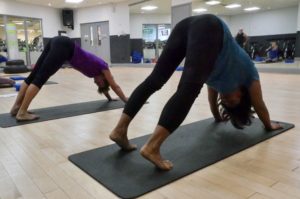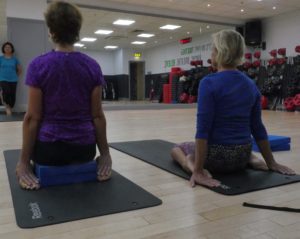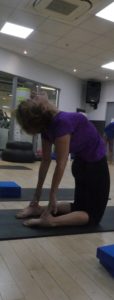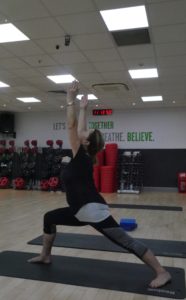
Men’s Running’s Adam Stephens asks Jane Howard more about Iyengar Yoga and how it can help improve your running
Jane Howard passed her Iyengar teacher training in 2002 and currently teaches four regular classes a week.
Among the high profile sportsman to do this form of yoga include current Wales Manager and Man United legend Ryan Giggs. Giggs believes it was responsible for prolonging his impressive career as a player after a number of hamstring injuries in his twenties.
What is Iyengar yoga?
Iyengar yoga is named after a man called BKS (Bellur Krishnamachar Sundarraja Iyengar). BKS developed Iyengar yoga from Hatha yoga, which simply refers to the practice of physical yoga postures.
Typically in the west more females attend the classes but Jane thinks this is beginning to change in the UK as people are becoming more familiar with it – and are less scared to try it.
What are its main characteristics?
“It really focuses on the precision and alignment of our bodies and uses props if they help us do the poses better,” says Jane.
“The other main aspects of Iyengar yoga are that you are working both sides of the body equally and really paying attention to what the body is doing, in other words increasing your body awareness. The final key feature is that you are spending a lot more time in each of the poses, making sure you are doing the pose correctly, even the small details. Rather than just flowing through them more swiftly, like you would maybe do with other forms of yoga such as Hot Yoga.
How could it help improve your preparation for running?
It can bring strength and flexibility into the mind as well as bringing it into your body too. So it develops your own body awareness and understanding as well as posture and core strength in a subtle way.
If you get nervous before a race for example you can use breathing techniques, which you can learn through yoga to help calm you down.
If you also want to taper a day or two before a big race, you can by practising yoga as it provides you with greater flexibility, more ability to move your legs fast and you are less likely to have an injury as a result. “In other words you are prepared without tiring yourself out,” says Jane.
For example in yoga you can stretch out the muscles that you tend to easily injure in running such as your feet, ankles, knees and back as well as quadriceps, hamstrings, glutes and hip flexors.
Jane’s five key poses
Downward Dog (Adho mukha svanasana)

It will stretch the back of the legs in particular, so hamstrings, calves and Achilles tendons. You are also stretching up through your arms and your trunk. So if you have got compressed through running you are stretching up through your sides of the body and your spine as well.
Standing forward bend (uttanasana)

You can do this with your heels on a raise. Stand with your legs hip-width apart, heels up on a raise, (so it could be a book or something). Stretch your arms down towards the floor. Rest your hands on either your shins, a yoga pad or even the floor if they will reach. Keep your knees straight and thigh muscles lifted. You can also do a half-uttanasana as well with your hands on a wall, so you are making a right-angled shape so your legs are perpendicular, you hinge at the hips and you are stretching forward. However you have to remember not to push this particular one too much as otherwise you will just tear your hamstrings.
Hero Pose (Virasana)

Start by just doing normal kneeling, which you are just sitting on your feet, and stretching your toes back – this can be difficult when you are just kneeling because your hamstrings are tight.
So just practise kneeling, getting that stretch in the hamstring and in the quads. If you think about what you are doing to your feet you are also really stretching the ankles as well.
Then you can move onto Virasana, where you take your feet apart so you sit on the floor or sit on a raise e.g. a Yoga pad or a book if you can’t get down to the floor. So your feet are by your hips and you’re in a kneeling position.
Camel Pose (ustrasana)

Start by kneeling down, then kneel up so your shins are down and your thighs are perpendicular. Next you lift the chest and reach your hands back to your heels. Keep the thighs forward and the hands back on the feet. This is a mild back bend is good for the running and the opening of the chest. You also get the work in the spine in this pose; this will help improve your posture.
Warrior I Pose (Virabhadrasana I)

I personally find this pose very helpful. It stretches the hip flexors and it lifts and opens the chest making sure that you are breathing well. In this pose you step one foot forward and one foot back, you keep your back foot flat on the floor, bend your front knee to make a right angle and then you shoot your arms up to the sky and then you look up at the ceiling between your hands. Make sure to have your arms and the back leg straight and breath normally. Do not hold your breath. Finally aim to hold the pose for 10 to 20 seconds and then repeat with the other leg forward.






